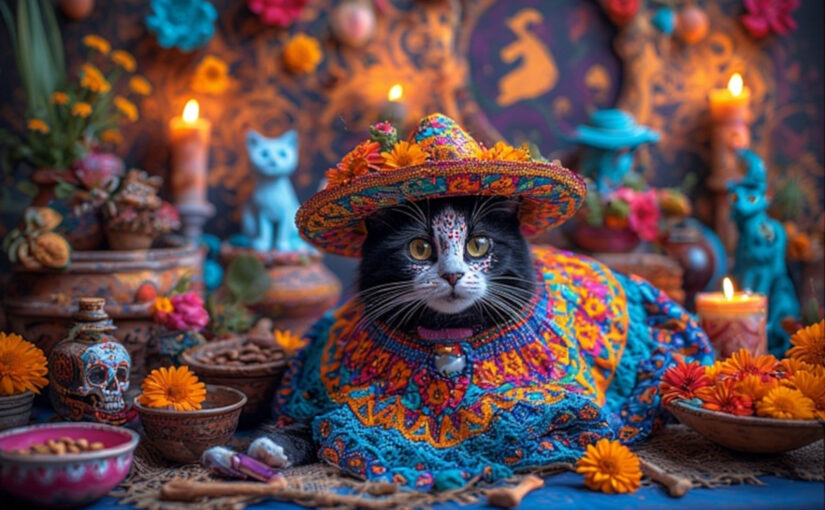In the soft glow of flickering candles, a small altar sits in a cozy Mexico City home, adorned with marigold petals that scatter like golden confetti across a worn photograph of a loyal golden retriever named Max. His collar dangles nearby, next to a half-eaten bone and a frayed tennis ball, while the scent of copal incense mingles with the earthy aroma of fresh flowers. This scene, captured during the early days of Día de Muertos preparations, captures the essence of a growing tradition: Día de Muertos de las Mascotas, where families pause to celebrate the unbreakable bond with their departed animal companions. It is a moment of quiet joy amid the vibrant chaos of the holiday, reminding us that love transcends even the veil between life and death.
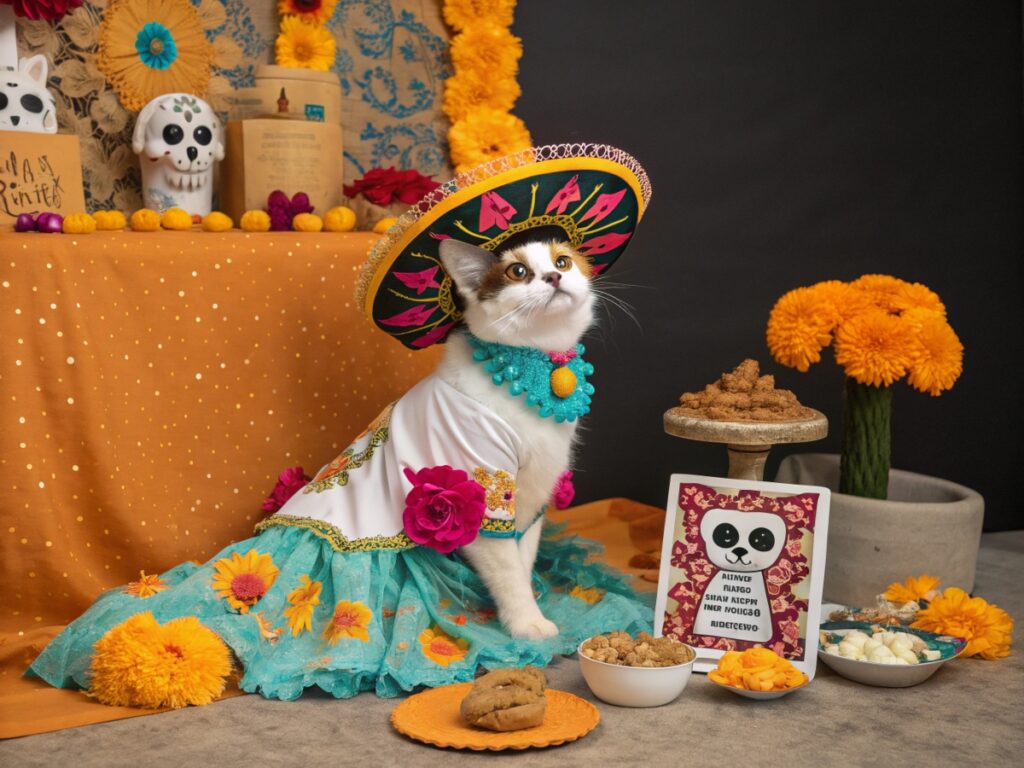
The roots of Día de Muertos stretch deep into Mexico’s pre-Hispanic past, blending indigenous reverence for the dead with Catholic influences introduced during the colonial era. Ancient Mesoamerican cultures, particularly the Aztecs, viewed death not as an end but as a continuation of the soul’s journey, often guided by animal spirits through treacherous underworld realms like Mictlán. Dogs, especially the sacred Xoloitzcuintli breed, held a pivotal role in these beliefs; they were seen as psychopomps, ferrying souls across rivers of peril to reach eternal rest, a duty so vital that owners were sometimes buried with their canine guides. This fusion evolved significantly after the Spanish conquest in the 16th century, when All Saints’ Day and All Souls’ Day on November 1 and 2 merged with native rituals, creating the syncretic celebration recognized today. Over centuries, the holiday adapted to social changes, incorporating elements like colorful calaveras and pan de muerto, while maintaining its core as a communal embrace of mortality. A key milestone came in 2003, when UNESCO proclaimed Día de Muertos an Intangible Cultural Heritage of Humanity, highlighting its indigenous origins and ongoing evolution. The extension to pets emerged more recently, reflecting modern shifts where animals are cherished as family members, especially in urban households without children. Regional variations abound: in Oaxaca, indigenous communities emphasize communal grave cleanings with floral tributes, while urban centers like Guadalajara incorporate artistic ofrendas influenced by Catholic iconography. This pet-inclusive adaptation, formalized around 2019 by pet funeral services, marks a contemporary cultural shift, bridging ancient animal veneration with today’s emotional landscapes.
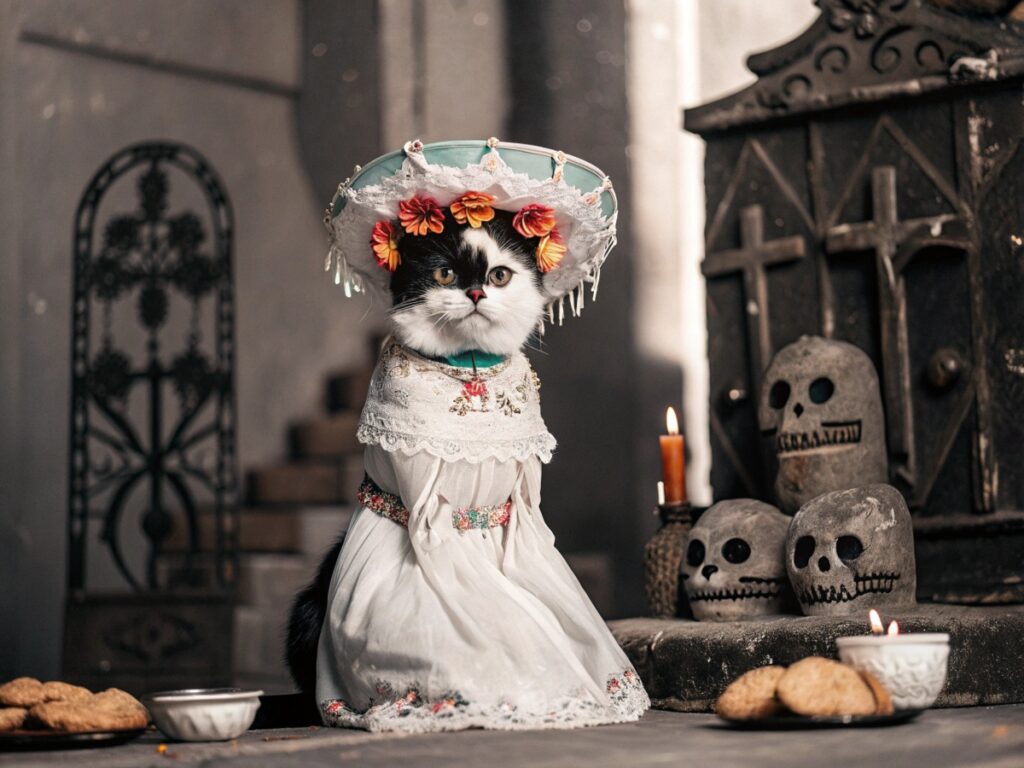
At the heart of Día de Muertos de las Mascotas lie the intimate rituals that bring animal loved ones back into the fold, often beginning on October 27, a date now dedicated to their souls’ return. Families craft personalized ofrendas, multi-tiered altars symbolizing life’s layers from earth to the heavens, placing cherished photos of their pets at the center to invoke memories of playful chases or gentle purrs. Toys that once sparked joy, such as yarn balls for cats or squeaky chewies for dogs, join plates of favorite treats; imagine a bird’s seed scattered beside a feather toy, or a fish’s bowl filled with colorful pebbles evoking an aquarium’s sparkle. These offerings extend beyond homes to pet cemeteries in Mexico City, where visitors light white candles and lay marigold wreaths, the flowers’ potent fragrance believed to guide spirits homeward. Parades add a communal flair, particularly in bustling urban areas, where marchers don animal-inspired costumes and carry banners honoring feline explorers or loyal hounds, turning streets into rivers of shared reminiscence. In rural Michoacán villages, the focus turns inward, with families gathering around modest altars in thatched homes, sharing stories of barnyard companions under starlit skies, the crackle of a bonfire underscoring the night’s warmth. These practices foster profound emotional connections, allowing grief to transform into gratitude, as participants feel the presence of paws that once padded softly through their lives. The rituals emphasize inclusivity, welcoming tributes for all creatures, from hamsters to horses, ensuring no bond goes unacknowledged in this tapestry of remembrance.
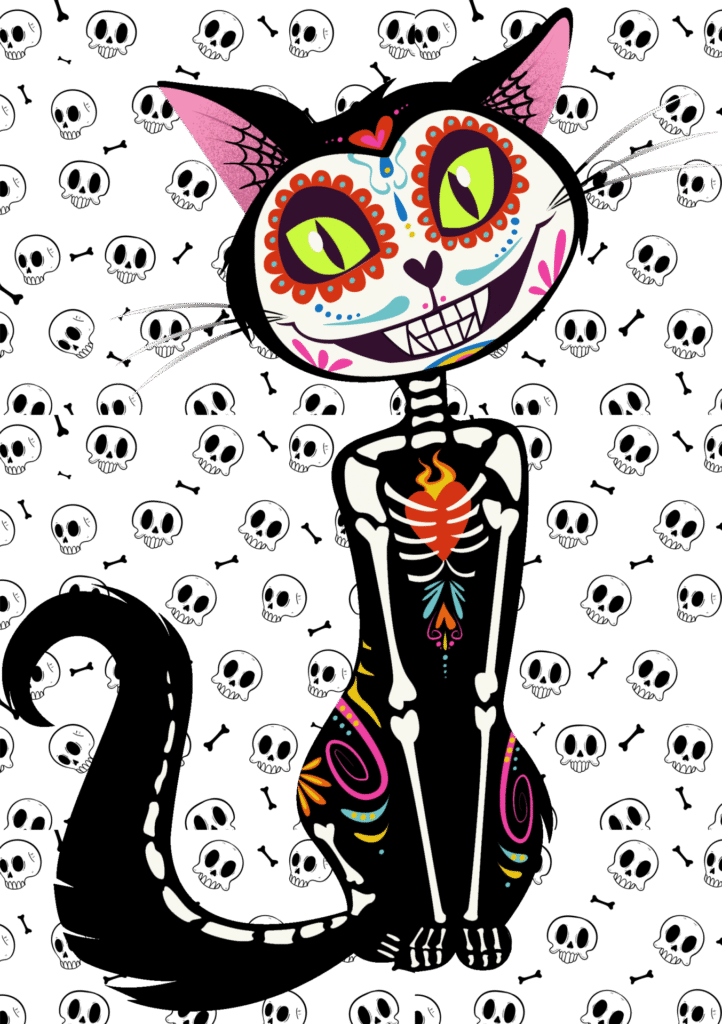
The cultural significance of Día de Muertos de las Mascotas weaves themes of enduring love, the sting of loss, and a hopeful vision of an animal afterlife into Mexico’s rich folklore. In Aztec lore, animals like the Xoloitzcuintli embodied protective spirits, warding off underworld dangers and symbolizing loyalty that outlasts mortality; superstitions persist that unkindness to dogs in life might hinder one’s afterlife passage, a belief echoed in modern tales of spectral pets returning to comfort the living. This tradition underscores the human-animal bond as sacred, portraying pets not as mere companions but as soulmates whose spirits roam freely, perhaps frolicking in ethereal fields or curling up in heavenly laps. Globally, the practice inspires adaptations; in the United States, events like the Los Angeles Zoo’s Beloved Pets Ofrenda invite diverse communities to contribute photos and mementos, blending Mexican roots with multicultural grief rituals. Non-Mexicans, from European expats to Asian diaspora families, incorporate pet altars into Halloween fusions, creating hybrid celebrations that honor universal pet devotion while respecting origins. Such evolutions highlight Día de Muertos’ adaptability, turning personal loss into a collective affirmation of life’s cycles, where every wag of a tail or flutter of wings merits eternal celebration.
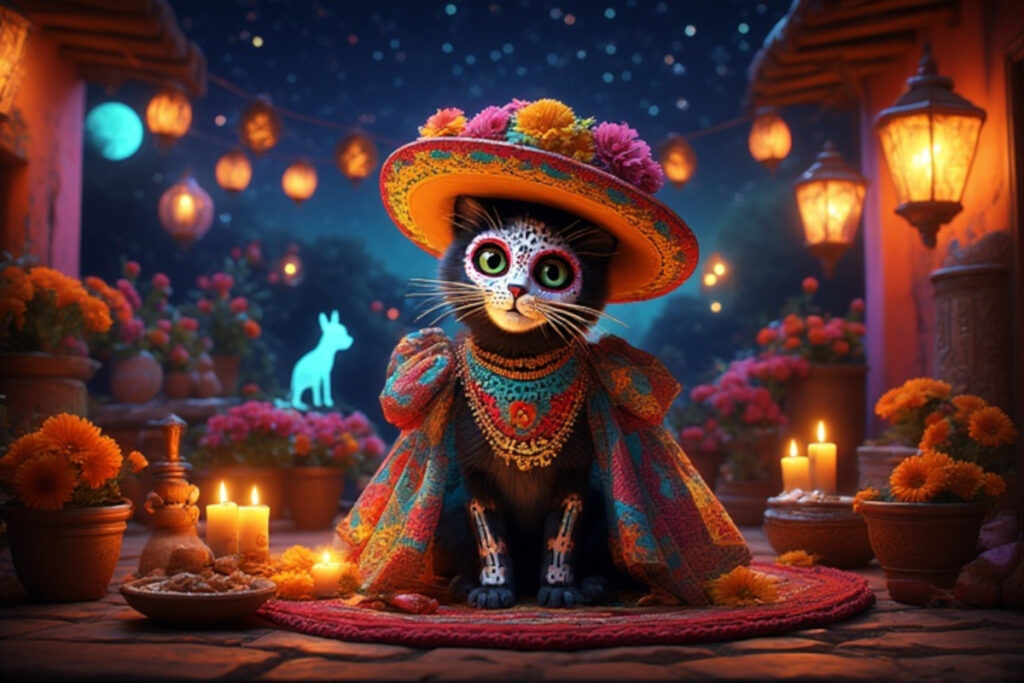
For those inspired to participate, creating a pet ofrenda offers a simple yet meaningful way to connect with this tradition, adaptable to any space or pet type. Start with a sturdy table or shelf, draping it in purple or orange cloth to evoke the holiday’s vibrant palette, then arrange levels using books or boxes to represent the journey from earthly life to spiritual peace. Place a clear photo of your pet prominently, surrounded by their signature items: a collar for a dog, a scratching post snippet for a cat, seeds for a bird, or a tiny aquarium replica for a fish, ensuring the setup reflects their unique personality. Add universal elements like marigold petals for guidance, a bowl of water to refresh the soul’s thirst, and white candles for illumination, but opt for battery-operated ones if flames pose risks around curious remnants. For birds or small animals, include feathers or nests; for larger pets like rabbits or reptiles, feature hides or favorite veggies arranged artfully. Position the ofrenda in a quiet corner, perhaps near a window to “invite” the spirit, and visit it daily during late October, speaking words of thanks to deepen the emotional release. This act, inclusive and heartfelt, invites anyone, regardless of cultural background, to weave their pet’s memory into a tapestry of joy.
As the marigold scents fade and candles dim, Día de Muertos de las Mascotas leaves a lingering warmth, urging us to cherish every moment with our animal friends. Share your own stories of beloved pets in online communities or family gatherings, letting their legacies inspire others. Plan a simple ofrenda this year, or dive deeper into Día de Muertos through local events and books, forging connections that honor the past while embracing the present. In this way, the tradition lives on, a joyful bridge across worlds.
If you find joy in these tales of twitching whiskers and gleaming eyes, consider helping keep Whiskerito.com alive and purring. Your donation supports thoughtful research, engaging content, and the warm, wonder-filled community that makes this space what it is.
